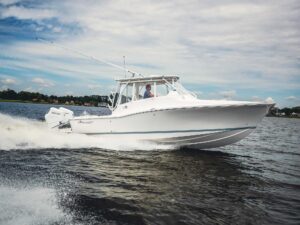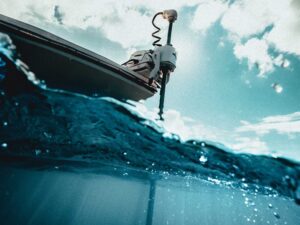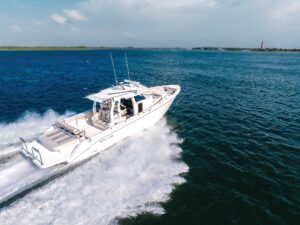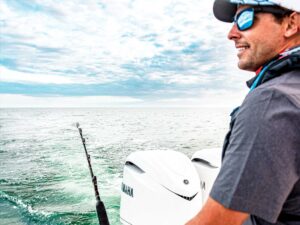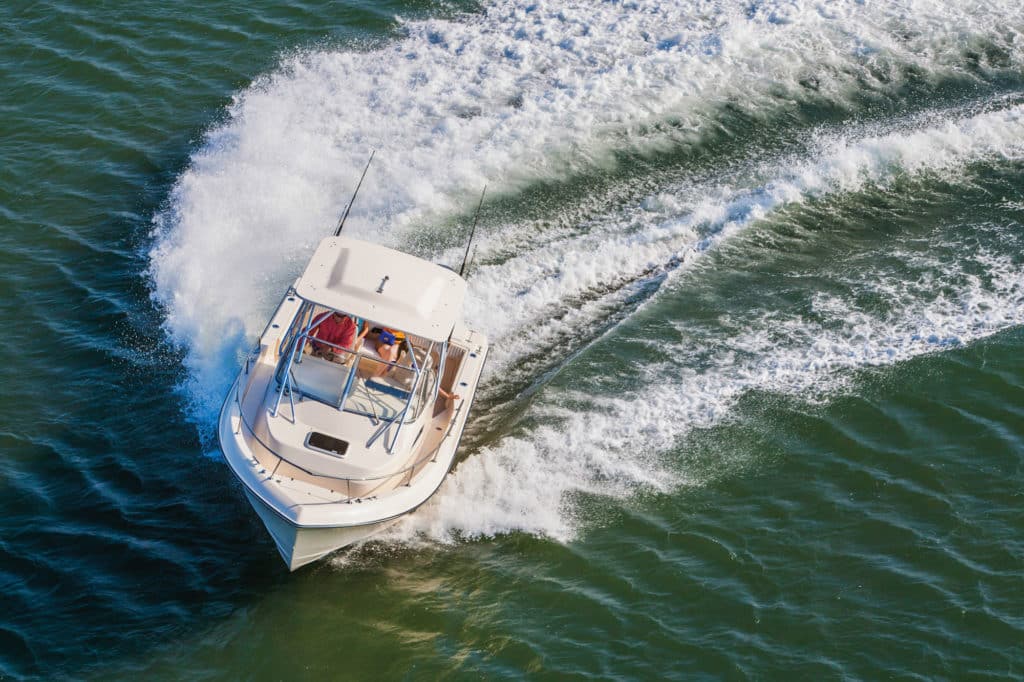
Growing up, I was a die-hard center-console fan. I loved the ability to fight king mackerel, sight-cast to cobia on light tackle from the bow, or manage a triple-header all the way around the boat with no obstructions. I enjoyed the wide-open feel of the design, and didn’t mind the fact that center-consoles usually offer little in the way of creature comfort or protection from the elements.
Then my father brought home a new-to-us boat for the family: a 23-foot Grady-White walkaround. I dismissed it as more of a cruiser than a hardcore fishing machine but decided that I’d keep an open mind about the new boat. Our first trip found us slogging offshore in a stiff northeast breeze and some rough seas in late fall off southern North Carolina. Thankfully, Dad and I remained warm and dry because of the boat’s full windshield and spray curtains. “Not bad,” I thought to myself. “In the old boat, I’d be in head-to-toe foul-weather gear the minute we left the inlet—and still wet.”
Once we arrived at our spot about 25 miles off Carolina Beach, we made a few drifts for bottomfish. No sweat—the spacious cockpit was a breeze to fish from. The boat had in-deck fish boxes as well as ample tackle storage, so reaching for a heavier weight or different hook was a snap. Once we located a sharp, rocky ridge along the bottom, it was time to drop the hook. I made my way forward to the bow along the deep alleys, aided by the Grady’s tall bow rail. I quickly had the anchor set and was back in the cockpit just as fast.
That trip took place more than three decades ago, yet the fact remains that walkarounds are one of the most versatile designs on the water today. They can be outfitted as hardcore offshore-fishing machines or family cruisers—or just about anywhere in between. Thanks to the safety and security provided by the full windshield, full bow rails and high gunwales surrounding a deep cockpit, they are near-perfect boats for families with small children.
Belowdecks, the arrangements can range from a simple V-berth to a fully outfitted space with bunks, a dinette, a galley with a microwave and refrigeration, and a full head with a shower—all the comforts of home
With them, you can cruise up and down the coast, visiting a different marina each evening. Plug in the shore power, and you’re all set. For offshore use, a small generator can be a worthwhile investment, while battery-powered inverters suffice for smaller boats.
Outboard power is the most popular in this category, and options range from a single 150 hp outboard in a 20-footer to quad Yamaha 425 XTOs in a 40-footer.
Even if it’s just a morning of trolling or bottomfishing and an afternoon of beachcombing, walkaround boats are a near-perfect fit, offering the right combination of amenities and fishability to handle just about any task.
Editor’s Tip: As you begin your research into purchasing a new or used walkaround boat, first carefully consider how you intend to use the vessel. Be honest with yourself, as well as your spouse and family. Will you really use that space belowdecks for overnight or weekend trips? How often will you need outriggers, a livewell or tackle storage? Define the most important features first, and that will help narrow your search later.

